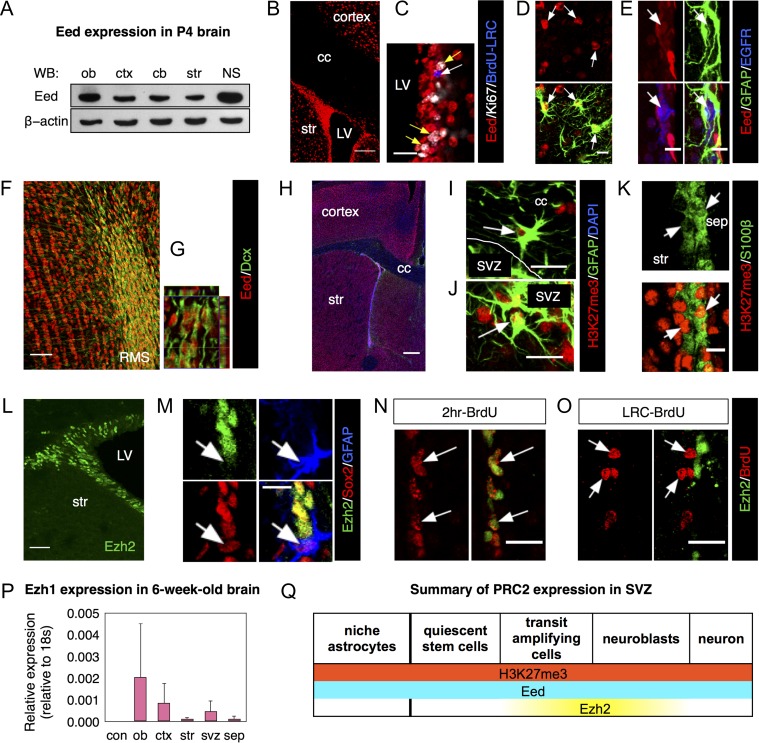Figure 1.
Eed, but not Ezh2, is expressed in the entire SVZ lineage. (A) Western blot for Eed in different regions of postnatal brains. Neurospheres (NS) were cultured from P4 SVZ tissues. (B, C) Expression of Eed in proliferating cells (white arrows) and BrdU+ label-retaining cells (yellow arrows). (D–G) Eed expression in GFAP+/EGFR− SVZ niche astrocytes (arrows in D), TAPs (arrows in E) and neuroblasts (F–G). (H–K) Immunostaining for H3K27me3 in astrocytes in corpus callosum (arrow in I), in SVZ (arrow in J) and ependymal cells (arrows in K). (L) Immunostaining of Ezh2 in the SVZ of the young adult mouse forebrain (6 weeks old). (M) Confocal images of Ezh2 in GFAP+/Sox2+ neural stem cells. Arrows in (M) indicate GFAP+/Sox2+ stem cells. (N, O) Images of Ezh2 expression in acutely proliferating SVZ cells (N) or label-retaining cells (O). Arrows indicate BrdU+ cells. (P) qPCR for Ezh1 mRNA expression in different regions of adult brain. N = 3. (Q) Schematic representation of PRC2 expression in the SVZ neural stem cell lineage. Abbreviations: LV, lateral ventricle; str, striatum; ob, olfactory bulb; ctx, cortex; cb, cerebellum; NS, neurosphere; cc, corpus callosum; sep, septum; RMS, rostral migratory stream. Scale bars represent 10 μm in (M), (D, E), (K); 20 μm in (N, O), (C), (I, J); 40 μm in (L); 50 μm in (K); 100 μm in (B); 300 μm in (H).

